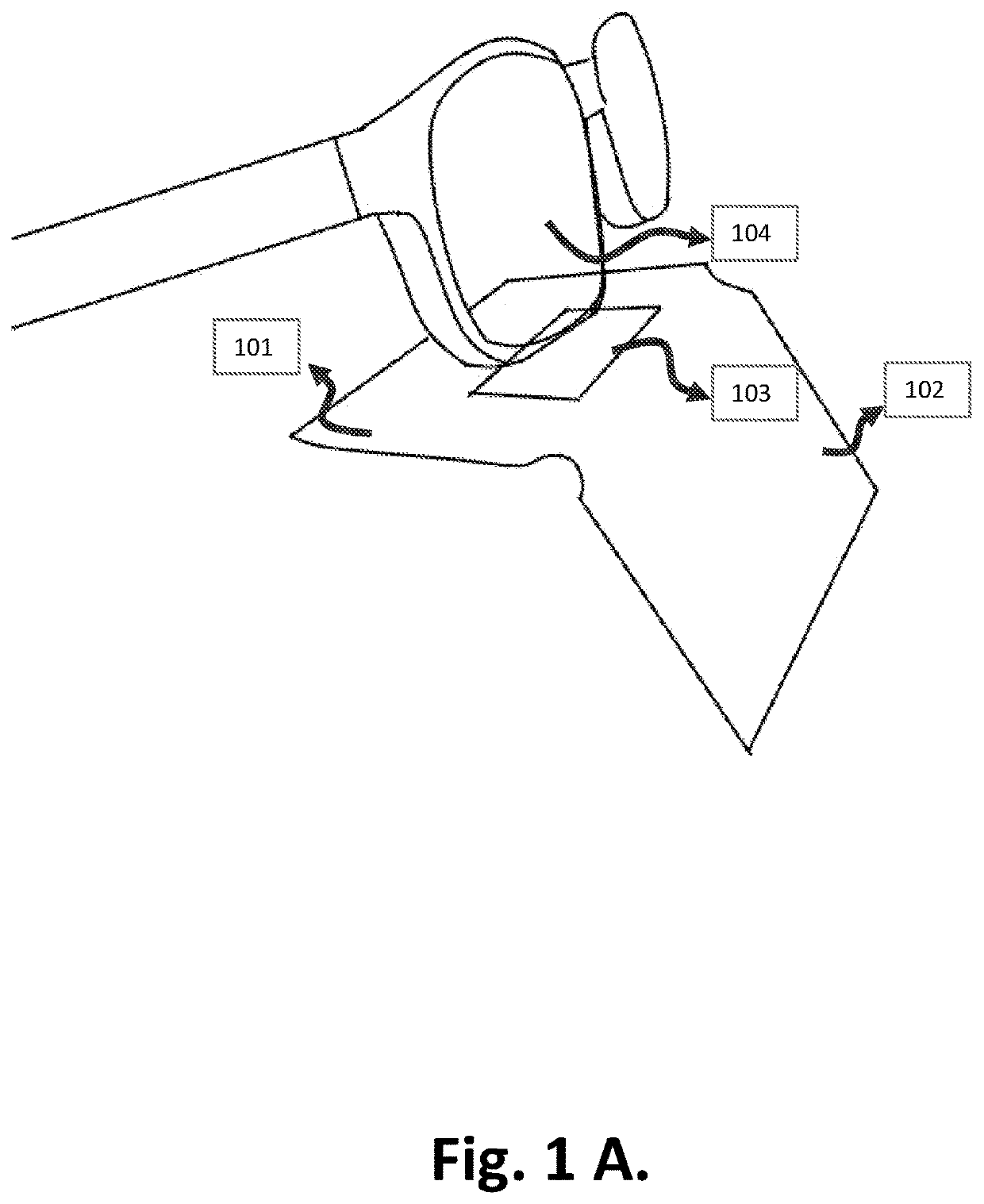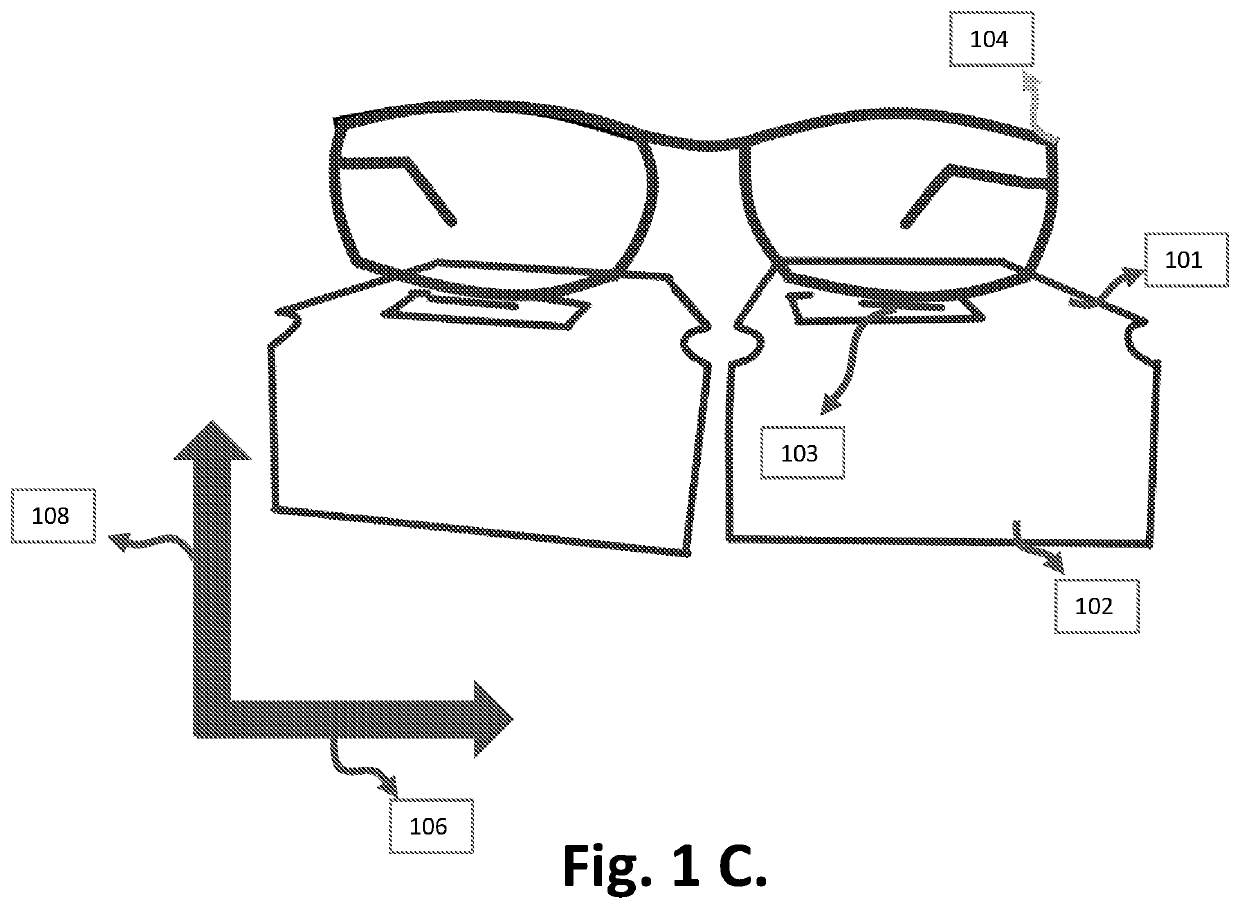Anti-Fog Medical Face Mask and A Device for Preventing Formation of Fog on Eyewear while Wearing Face Cover
a technology of face mask and eyewear, which is applied in the direction of spectacles/goggles, protective garments, instruments, etc., can solve the problems of eyewear exhalation, formation of fog on the eyewear, and formation of fog on the surface of eyewear, so as to prevent the formation of fog on the eyewear, and prevent the leakage of exhaled air
- Summary
- Abstract
- Description
- Claims
- Application Information
AI Technical Summary
Benefits of technology
Problems solved by technology
Method used
Image
Examples
Embodiment Construction
[0067]FIG. 1 A-C illustrate the disclosed device attached to an eyewear. This device is comprised of at least one plate (or in another wording an air impervious element) which is indicated as 101. 101 is an air impervious element having a top surface, a bottom surface, a first end, a second end, and a middle portion between the two ends. 101 extends between the face of the user and the lower edge of the eyewear worn by the user. The side (the first end) of 101 that extends toward the face of the user is located on or above the upper edge of the mask to prevent the leaked (from the top of the mask) exhaled air from penetrating the space between the eye and the inner surface of the lens. The other side (the second end) of 101 extends toward the eyewear. 101 may be tilted to so that the side (the first end) of 101 that extends toward the face of the user can be placed on or above the upper edge of the mask even when the mask is covering areas of the face that are above the lower edge o...
PUM
 Login to View More
Login to View More Abstract
Description
Claims
Application Information
 Login to View More
Login to View More - R&D
- Intellectual Property
- Life Sciences
- Materials
- Tech Scout
- Unparalleled Data Quality
- Higher Quality Content
- 60% Fewer Hallucinations
Browse by: Latest US Patents, China's latest patents, Technical Efficacy Thesaurus, Application Domain, Technology Topic, Popular Technical Reports.
© 2025 PatSnap. All rights reserved.Legal|Privacy policy|Modern Slavery Act Transparency Statement|Sitemap|About US| Contact US: help@patsnap.com



